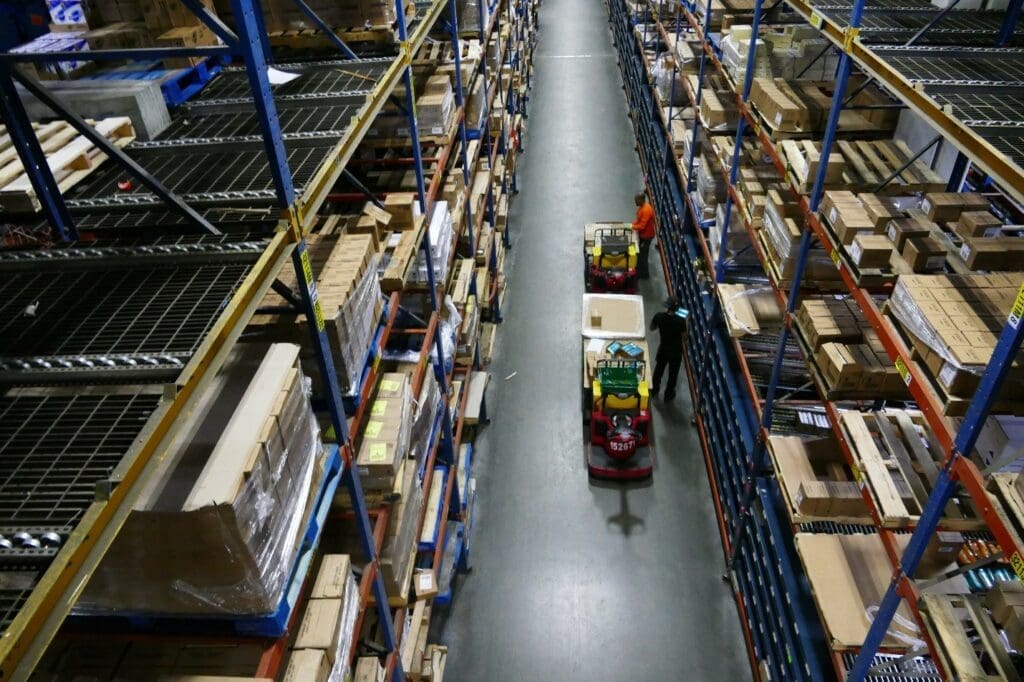 The Association for Supply Chain Management (ASCM) hosted its annual conference, ASCM CONNECT, on September 18 – 20 in Chicago. Fortunately for me, some of the sessions were available virtually. I found the presentation by UScellular especially interesting. I have always considered cellular and traditional communication companies to be service organizations. As such, I assumed that supply chain wasn’t a core competency. But I was wrong. I overlooked the sophistication required to support widespread and ongoing projects in support of constantly advancing cellular communication networks.
The Association for Supply Chain Management (ASCM) hosted its annual conference, ASCM CONNECT, on September 18 – 20 in Chicago. Fortunately for me, some of the sessions were available virtually. I found the presentation by UScellular especially interesting. I have always considered cellular and traditional communication companies to be service organizations. As such, I assumed that supply chain wasn’t a core competency. But I was wrong. I overlooked the sophistication required to support widespread and ongoing projects in support of constantly advancing cellular communication networks.
Rapid Change in an Asset Intensive Business
UScellular is the fourth largest wireless service provider in the US, distinguished by its dedication to rural communities of America. The company services customers with about 5 million retail connections in total. The UScellular network that supports these customers has been built locally, with a focus on serving underserved areas. The company’s cellular network includes approximately 7,000 cell sites. In 2020, UScellular took the major step of initiating the deployment of 5G technology across its network. Although the company has its roots in regional development, its growth opened up opportunities to gain efficiencies from centralized supply chain planning.
Network Supply Chain Restructure
UScellular historically operated with a regional structure. Being local allowed the company to understand the nuances of the community – such as knowing the dead spots with inadequate cell coverage. However, as supply chain practitioners know, operating regionally, or in a siloed fashion, tends to create inefficiencies that can be addressed by broader operating visibility and efforts to optimize holistically instead of locally. As UScellular matured, the supply chain function evolved, and a centralized supply chain function was initiated in the year 2000. This team in Chicago is responsible for logistics and coordinating efforts with vendors. Then earlier this year they added a supply chain planning function to the Chicago team. UScellular noted some of the major goals for its current supply chain transformation – much of which can be obtained from centralized supply chain planning.
- A centralized structure could provide standardization benefits that could deliver efficiencies through bulk purchasing, broader understanding of materials requirements, and more effective shipping practices.
- Visibility across the supply chain can enhance the ability to locate inventory and more intelligently prioritize its allocation to projects.
- Centralized planning with insights from across the organization can result in holistic optimization and improvements from business goal alignment.
The Complexity of Deploying a Cell Site
The build out of cell tower sites is more complex than I had imagined. I typically think of supply chains with a mix of SKUs in a make-to-stock process. Although planning and timeliness are important, the impact of a critical path is much more substantial in build-to-order, project-based supply chains. As such, supplier reliability, supply chain resilience, and agility were among the primary considerations of the UScelluar supply chain transformation. The supply chain team conducted an in-depth analysis of 3 key projects and determined that 61% of components are internationally sourced, and most critical components are manufactured in Asia or Europe. Meanwhile, material lead times ranged from 9 days to 9 months. As a result, proper planning is required to source and receive critical components upfront to assure that these materials do not cause a project bottleneck.
UScellular utilizes 13 warehouses across the US, positioned so that every network cell site is within 500 miles of a warehouse. But the company was unsure if this was the most effective network for the company’s priorities. With all of these considerations in mind, the UScellular supply chain team took a step back, imaginging the criteria for an optimally effective and efficient path forward. They named this initiative Project Network Enterprise Optimization (Project NEO).
Project NEO
The team knew that they wanted to be able to scale and move quickly and realized that doing so would be enabled by reducing complexity to deliver economies of scale. They looked back at 2 years of data and determined that one out of every seven sites built was a unique configuration. So they took the 80/20 rule, worked with the engineering team to determine requirements, and reduced 47 unique builds down to 4 standard builds that would accomplish 80 percent of what they needed.
Next, the cell sites vary greatly. But often the sites are a very small work area between a sidewalk and the street. This lack of space adds difficulty to the field team’s installation work. In an effort to simplify the installation process, the supply chain team laid out four pallets on a warehouse floor and developed the most effective way to kit materials so that the engineers in the field will be able to access materials in order of use when in the field, enabling efficiencies at the point of installation.
Poles for cell towers are custom materials with a long lead time. Some small cell sites are attached to street poles. Very often existing street poles do not have the structural integrity to handle the cell equipment, requiring cell providers to install new poles. Local jurisdictions also require cell providers to use poles that match the environment. The supply chain team looked at how they can streamline this process. They worked with a pole supplier and created a “pole library” and simplified the process, with due diligence up front to assure that the materials will meet requirements before they place the order, reducing inventory mismatch risk down the line.
Finally, a traditional network, transportation, cubic utilization analysis was done. They determined that deliveries were going to the same area multiple times, without bulk shipments. They identified a multimillion-dollar opportunity to reduce costs through more efficient shipping. They also found that they can currently reach 95% of their sites in four hours or less drive time. But with half the number of warehouses, they could still reach 95% of sites in six hours. This presented a potentially large opportunity to simplify the warehouse network at some point in the future.
Path Forward
They are currently on their journey – not finished. To get to where they want to be, they need transparency and visibility to mitigate risk. They believe future supply chain challenges, from plant shutdowns and supply chain disruptions, can be mitigated by upstream visibility. Also, workforce engagement is important given the expected increase in the need for supply chain talent and the tight workforce. Change management is an important and continuous process that needs to be managed They are trying to be open minded with their thought processes. Finally, they are working to prove their concepts out through presentation of data and facts.


















